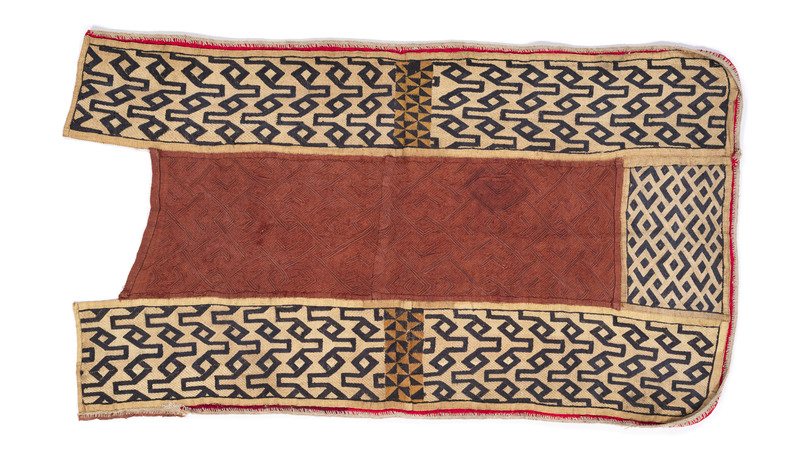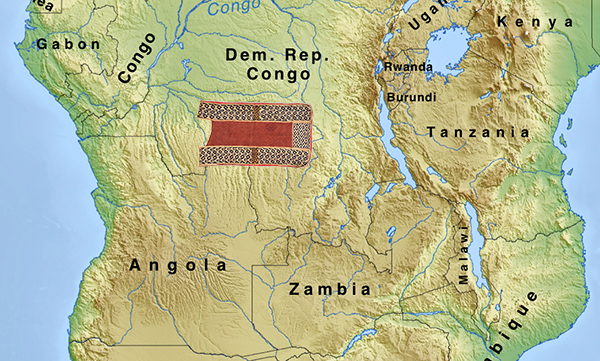Catalogue 39
Wrapper
Kuba people, Democratic Republic of the Congo
20th century
Raffia and dye; 55 1/4 x 31 1/4 inches (140.3 x 79.4 cm)
Smithsonian Institution, Department of Anthropology
Gift of Allen and Barbara Davis
E434905
The composition of this cloth, called ntshakabwiin, generally follows a classic arrangement, with raised pile cloth designs in the center and borders embroidered with an interpretation of the same central pattern or combined with another recognizable motif. Cornet rates this design as very high on the hierarchical scale of wrappers worn by women, and notes that it functions as an obvious sign of notability for the wearer (Cornet 1982, 195–96).
In this exquisitely executed example, several recognizable motifs are employed. The pattern in the small rectangular section with a predominant chevron design, mikomingom, is a Kuba favorite, abundantly used, and references the designs that king Miko mi-Mbul used on his royal drum (Cornet 1982, 169–71). The overlaying diamond and linear motif, which creates a sense of motion up and down the long edges of the cloth, is another perennial favorite, lo liyoong’dy, or “chameleon’s arms.” Inspired by “the strange allure of a chameleon’s paws,” this pattern is multiplied across objects in a wide variety of surface decorations, including the royal drum designed by another king, Mingashyaang (Cornet 1982, 171–72). The center panel is filled with one of the many variations of the “stones” design. The color and tones in Kuba textiles vary across the different styles produced by the many different ethnic groups that make up the kingdom (Adams 1978, 34).
JMP
References
Adams, Monni. 1978. “Kuba Embroidered Cloth.” African Arts 12 (1): 24–39, 106.
Burgunder, Lillian Maria. 2004. “This Opportunity to Dance: Kuba Textiles.” In See the Music, Hear the Dance: Rethinking African Art at the Baltimore Museum of Art, edited by Frederick John Lamp, 304. Munich: Prestel.
Cornet, Joseph. 1982. Art Royal Kuba. Milan: Grafica Sipiel Milano.



